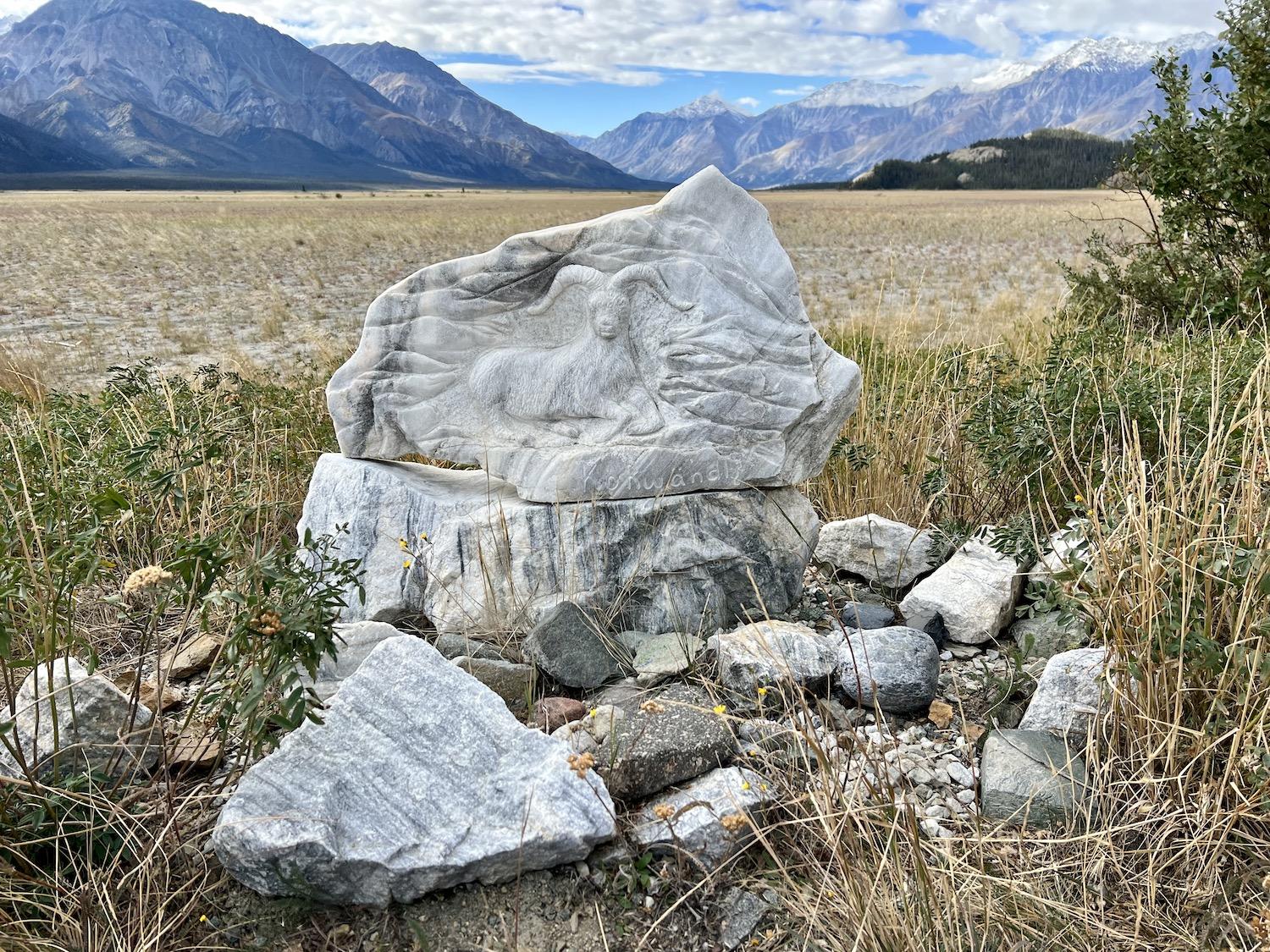
This image of a Dall's Sheep is etched in stone by the Thechàl Dhâl' Visitor Centre in Kluane National Park and Reserve in the Yukon/Jennifer Bain
It’s a good thing that the closest I get to Dall’s sheep in Kluane National Park and Reserve is the one carved into a stone slab outside the Thechàl Dhâl' Visitor Centre. Then, to satisfy my urge to see a real white sheep with curled horns, I squint at tiny white dots grazing on Thechàl Dhâl' (Sheep Mountain) and try a spotting scope for a closer look.
There’s no need to continue driving down the Alaska Highway here in the Yukon to what’s marked on park maps as the “area of highest sheep collision danger.” Motorists are forbidden from stopping on this winding stretch to take photos and it would stress me out to see camera-toting people disobeying this rule instead of driving ahead to two roadside pull-outs.
“Today’s wildlife: 81 sheep,” reads a running tally on the erasable notice board posted on the viewing platform.
“In this area, it’s one of the largest Dall’s sheep concentrations in the world,” interpretation coordinator Logan McKillop tells me. The park supports 300 to 400 sheep, and on Thechàl Dhâl' alone the summer aerial count showed 227.
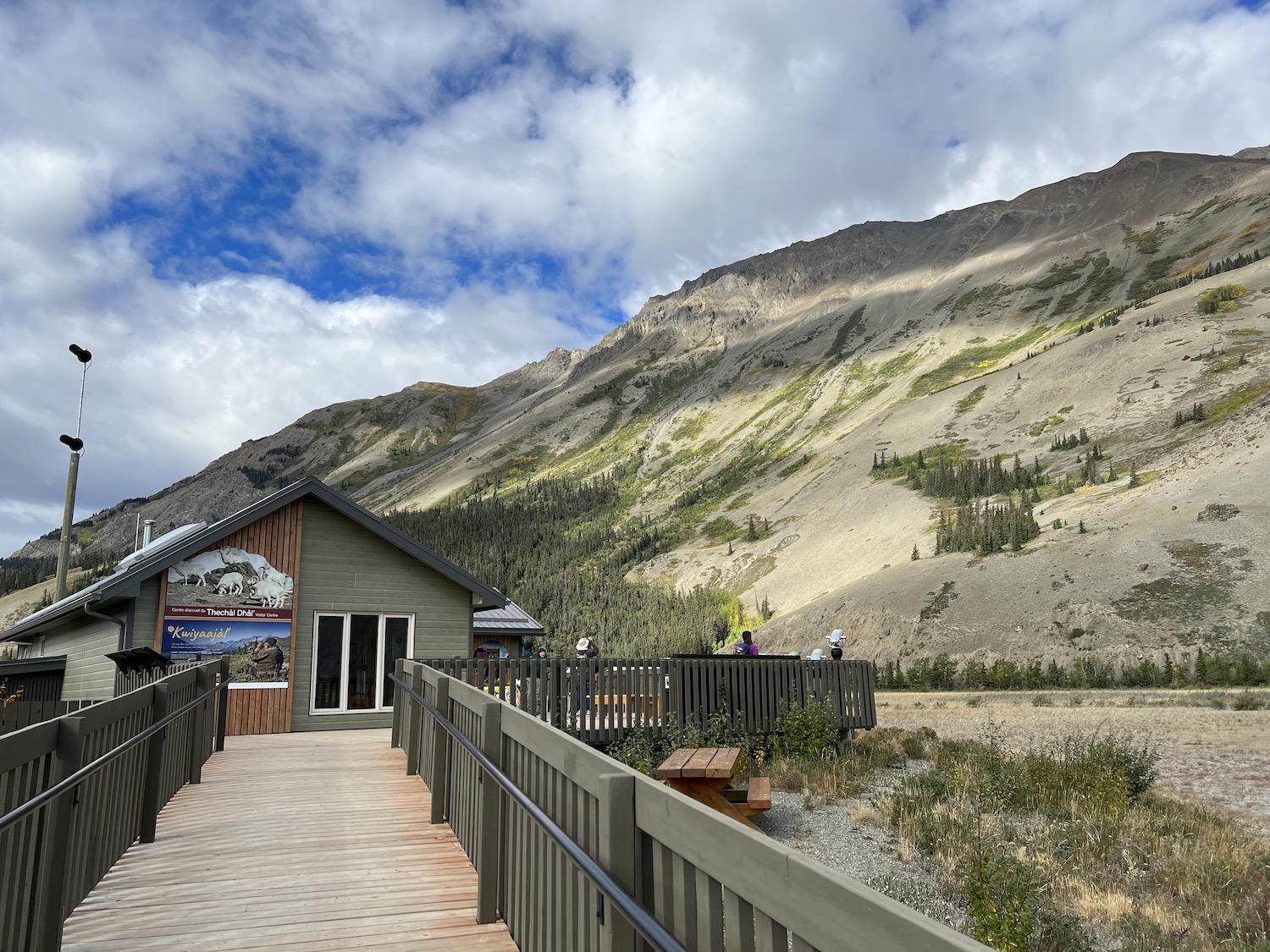
The Thechàl Dhâl' Visitor Centre has spotting scopes on a viewing platform below a mountain where Dall's sheep congregate/Jennifer Bain
But the population is starting to show some troubling signs, says McKillop. “Last year was the lowest recruitment rate on record since we started studying Dall’s sheep.”
“Recruitment is number of lambs born,” adds public outreach and education officer Rachelle Linde.
Before we delve deeper into this while hiking Sheep Creek Trail, I explore the one-room visitor center to see what I can learn from the interpretation panels.
It took decades of negotiations with the government, but the Dań — the people from the Kluane First Nation and the Champagne and Aishihik First Nations — have finally regained the right to hunt, trap, gather and fish in Kluane.
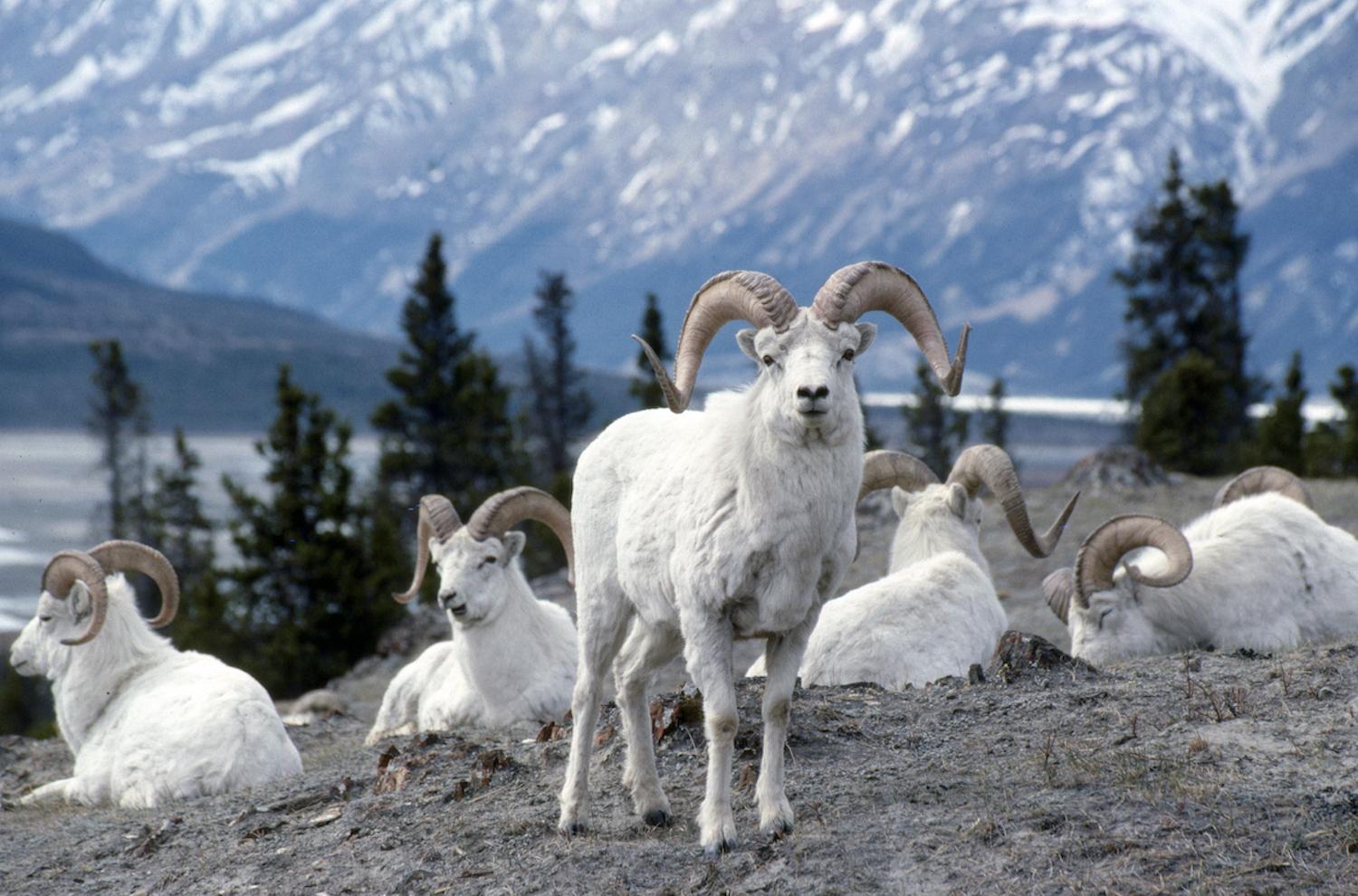
Dall's sheep, with their curled horns, are an iconic mammal in Kluane/Yukon Government
The Dań traditionally hunted Dall’s sheep — called mäy in Southern Tutchone — by ensnaring them in traps made of rawhide and willow, then killing them with arrows or spears. Now binoculars and rifles are used, but “when a young person hunts his or her first sheep, it is a milestone to be celebrated.”
Meat can be roasted over a fire or dried and frozen. Soft hides are turned into pants, blankets and children’s clothing. Ram horns become bowls and spoons, after being heated in boiling water until they’re malleable enough to be bent into shape and carved. Some sheep parts are decorated with copper, glass beads or abalone shells and become art.
Like most park visitors, I’m here simply to see a sheep and know this mountain offers the easiest viewing. It’s September and winter is coming, so the sheep are returning to the side of the mountain that faces the visitor center. Dall’s sheep survive winter by staying on this windswept, mostly snow-free, south side of this mountain, sheltering in gullies and using cliffs to escape predators. They forage for dry grasses, sedges and sage, but also live off their body fat.
Spring winds bring glacial dust that help plants thrive, so the sheep feast on fresh greenery and their lambs are born in May. “They go to the very top of Thechàl Dhâl and that’s the safest place for them to have their lambs to protect them from grizzly bears, wolves and from other predators like that,” McKillop explains. “But there’s one predator — the golden eagle, thäy in Southern Tutchone — and you’ll see these golden eagles circling around them. This is a major hotspot for a golden eagle migration corridor, along this mountain, so they’ll all kind of channel in here. What they’ll do is, if they’re lucky, they’ll go pick up a little lamb, or even make it unstable and knock it off the mountain, and supper is served.”
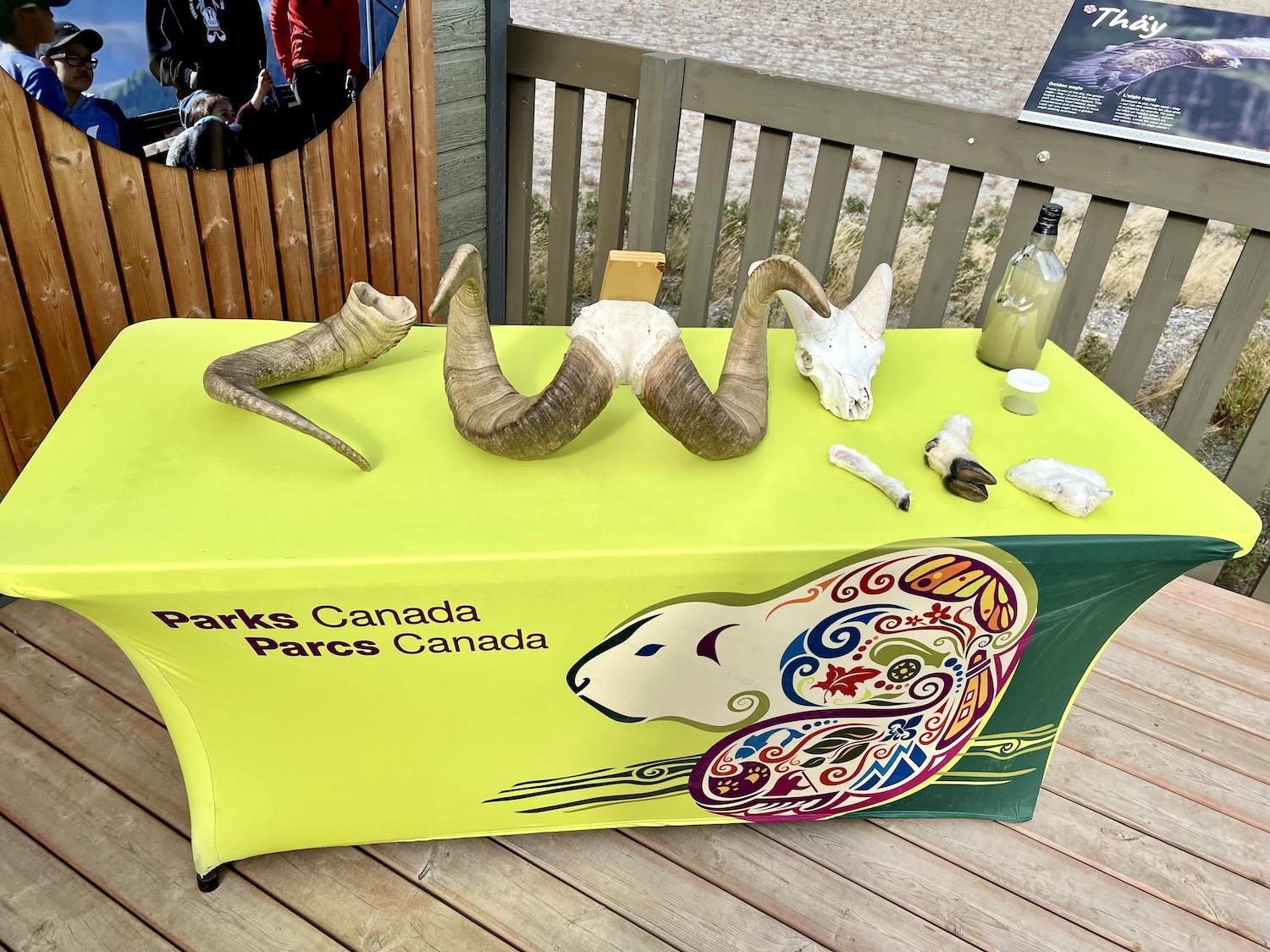
At the Thechàl Dhâl' Visitor Centre in Kluane, Parks Canada shows off Dall's sheep parts on the viewing platform/Jennifer Bain
By summer, ewes and their newborn and yearling lambs move to alpine meadows on the mountain’s north side. Rams, usually in bachelor groups, summer further west.
“The rams will stay in what we call ram bands and hang out together, just the guys,” says McKillop. In fall, the sheep head downhill to rut. Mating season in November and December involves jousting and ramming heads together, so they’re often seen eating salix (willows) because it contains acetylsalicylic acid which is what we derive Asprin from.
“So they’re essentially self-medicating from ramming their heads together,” says McKilllop.
“That’s the coolest thing — I love it,” Linde adds.
Since Dall’s sheep typically lose 20 per cent of their body weight over winter and need to regain it before the next winter, they need to eat as many plants as possible without interruption.
That’s where Parks Canada steps in to help the high-strung animal that might abandon parts of its range if repeatedly disturbed. Hikers and photographers are asked to stay at least 50 metres (165 feet) away, keep to established trails, keep dogs on a leash, ensure they never approach sheep from above like a predator would, and hike in small, tight, slow-moving groups.
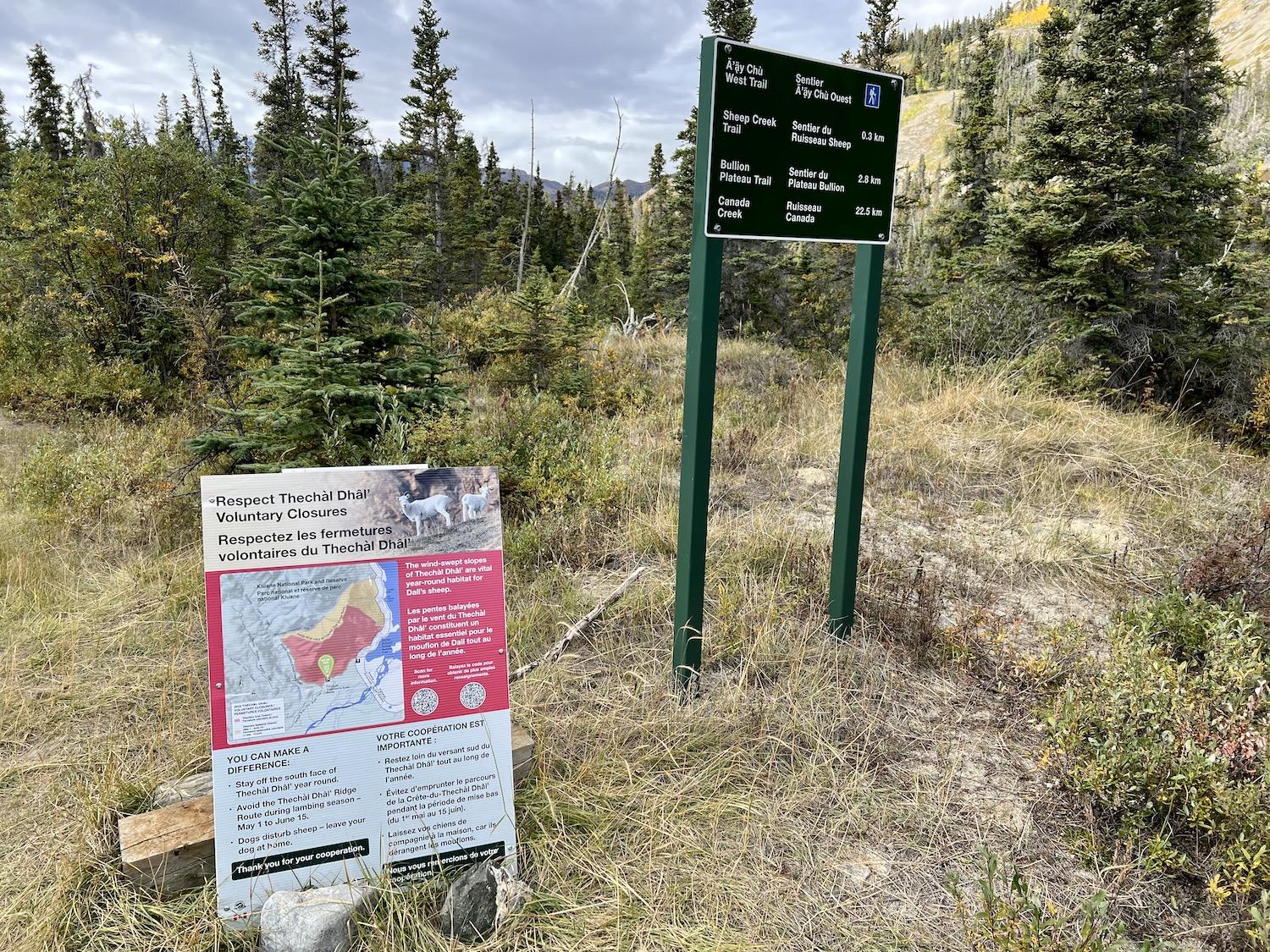
Signage just before the Sheep Creek trailhead tells hikers about Dall's sheep/Jennifer Bain
Travel Yukon’s Jennifer Glyka and I form a slow-moving group with McKillop and Linde to hike to Sheep Creek Trail’s first main viewpoint. It’s a steep climb along the southwest side of Thechàl Dhâl' on Kluane’s second most popular hike after King’s Throne.
McKillop says an ecological monitoring program studies Dall’s sheep in the area and keeps track on the annual numbers. “It’s looking like climate change is having a severe impact on the sheep,” he says.
Winters are becoming increasingly unpredictable. “One thing’s for certain, the last couple of years we’ve had a lot of snow and when there’s a lot of snow pack it can lead to an extended spring and Dall’s sheep are mostly living off this stuff — sage and grass,” says McKilllop. “If there’s a big snow pack it’s tough for them to get down to it. So if there’s an extended spring due to heavy snow pack, it can be really tough on lamb recruitment.”
As well, fluctuating temperatures are creating freeze/thaw conditions that result in ice crusts forming on top of snow pack. Those are even harder for the sheep to break through.
Last year there were just eight lambs born here, one of the lowest numbers recorded. This year the number rose to 19 on this mountain, but that’s still well below the average of 44.
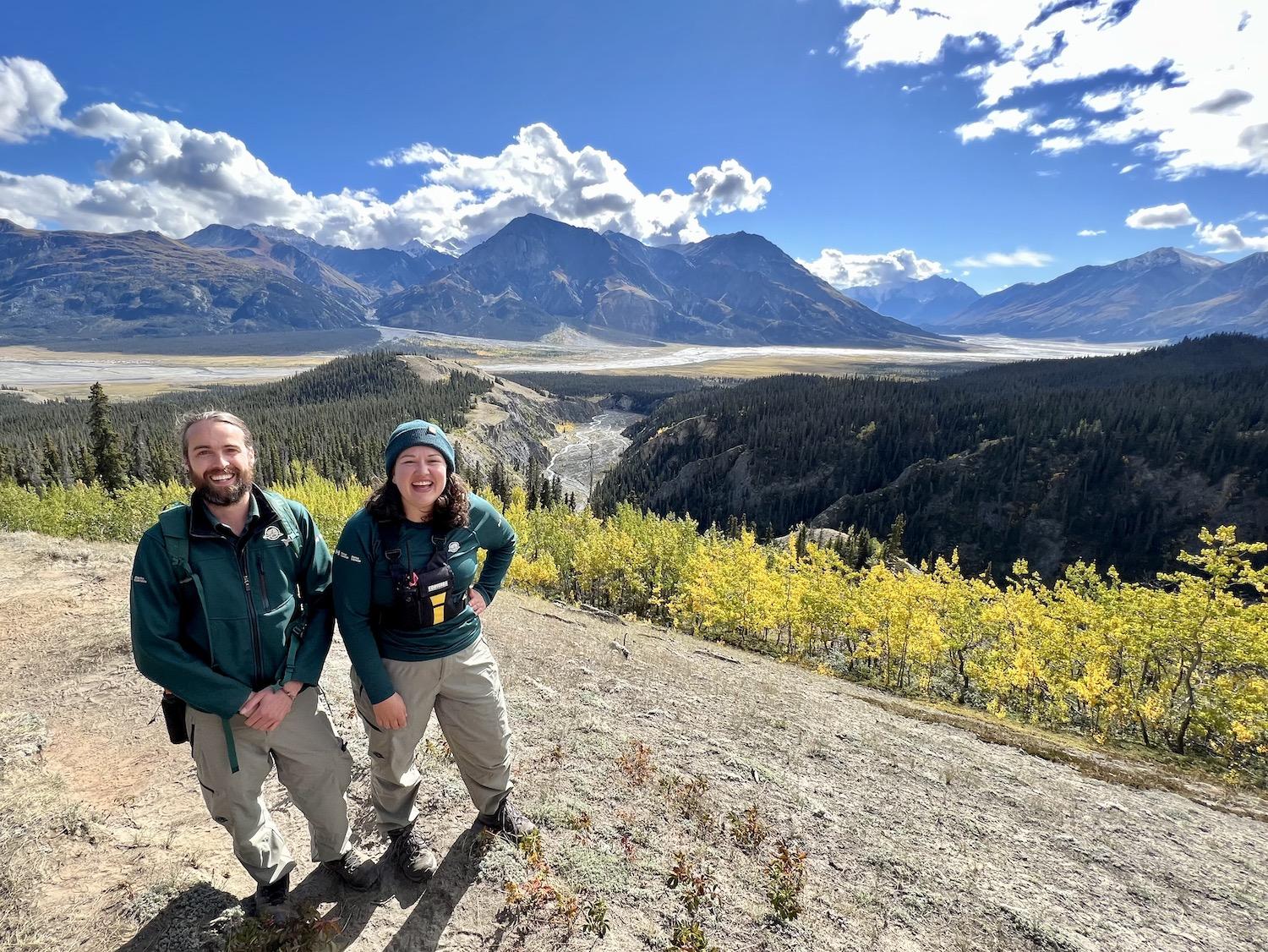
Parks Canada's Logan McKillop and Rachelle Linde stand at a viewpoint on Kluane's Sheep Creek Trail along the southwest side of Thechàl Dhâl' (Sheep Mountain)/Jennifer Bain
The Kluane region is warming, according to a May 2022 draft management plan for the park. The average annual temperature in nearby Haines Junction has increased by 4C (40F) since 1945, causing the loss of more than 230 small glaciers and 19 per cent of the total area covered by glaciers. In 2016, the retreat of the Kaskawulsh Glacier caused the diversion of a river into a different watershed and ocean, “bringing immense landscape change,” the draft notes.
Established in 1976 and cooperatively managed with two First Nations, Kluane shares UNESCO World Heritage Site status with Alaska’s Wrangell-St. Elias National Park and Preserve and Glacier Bay National Park and Preserve, and British Columbia’s Tatshenshini-Alsek Park. Together, these four neighbors from two countries make up the largest internationally protected area on earth at 24.3 million acres.
Canada’s highest mountains, vast icefields and glaciers cover most of Kluane, but there are “narrow rivers of green.” This 20 per cent — homeland to the Southern Tutchone for millennia and rich in plants and wildlife — is where most visitors travel and includes freshwater spots, boreal forest, alpine areas and rock and talus.
“Kluane is a land of extremes,” says McKillop, explaining the park has more than 2,000 glaciers and 17 of the 20 tallest mountains in Canada.
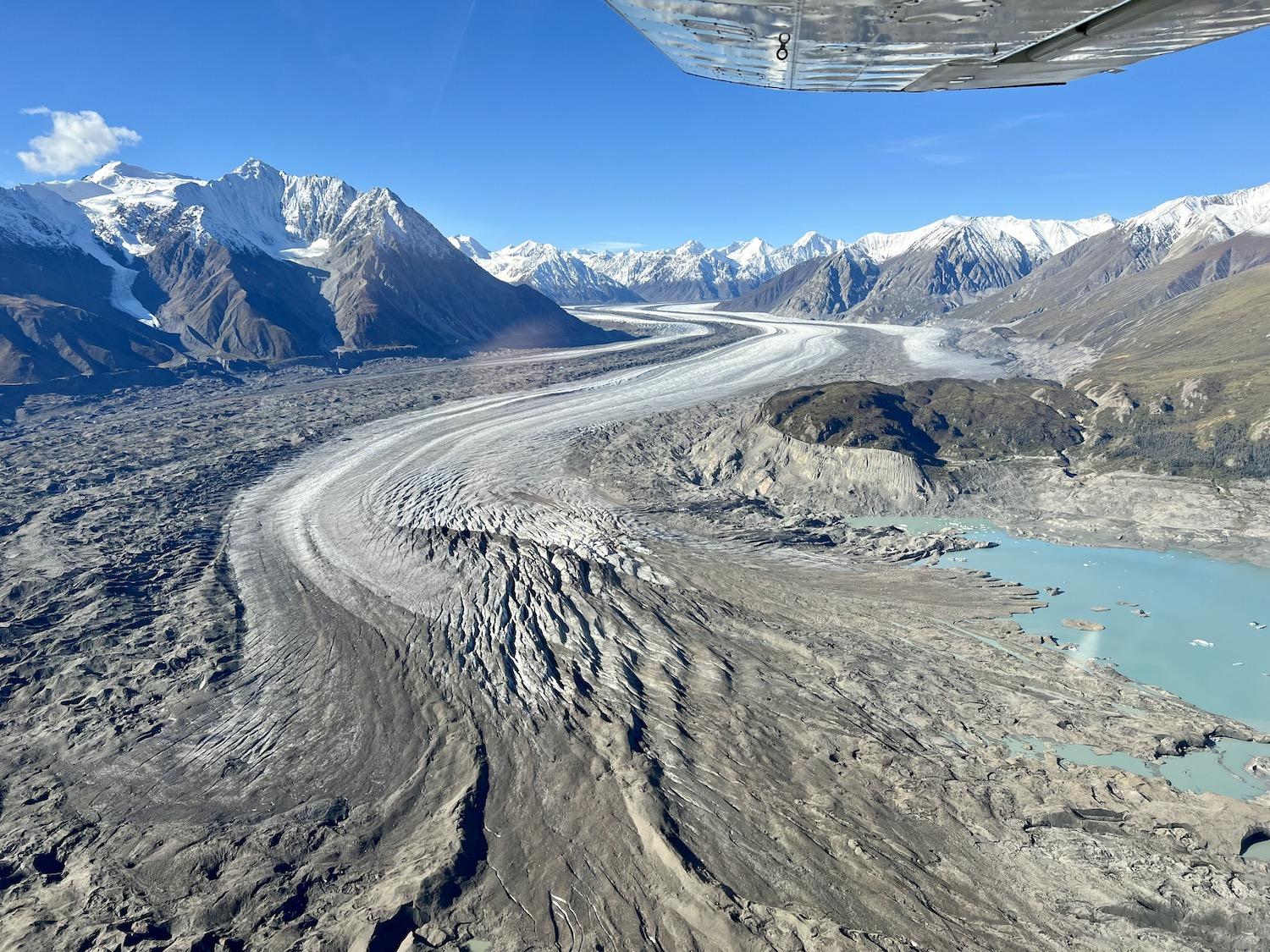
Views of the Kaskawulsh Glacier and St. Elias Mountains while on a flightseeing tour with Icefield Discovery/Jennifer Bain
But around here what’s important for people to know is that the Dall’s sheep come down from the mountain to the highway, especially in winter when the government spreads winter road salt to make winter driving safer.
“That puts them at pretty high risk of being hit by vehicles going around those corners, so all the signage you would have seen are asking people to slow down, to look out, and to know that sheep do come through here,” explains Linde. “A few years ago, almost the entire nursery, a considerable number of lambs and ewes, was taken out by a truck on the highway and that’s had a pretty dramatic impact on the population here.”
Kluane’s resource conservation team and its partners have been studying the problem, collecting data and debating solutions. Fencing is under consideration and there are voluntary trail closures in spring to keep people and dogs away from the sheep during lambing.
“There are natural salt licks on the mountain but for whatever reason it’s easier to get the stuff on the roads,” says Linde. “Right now we’re working on a project to use diversionary salt licks, so creating our own. Up on the mountain and away from where any people would typically be hanging out, because we want to try and see if we can offer those salts and minerals that the sheep are looking for elsewhere to keep them away from the road.”
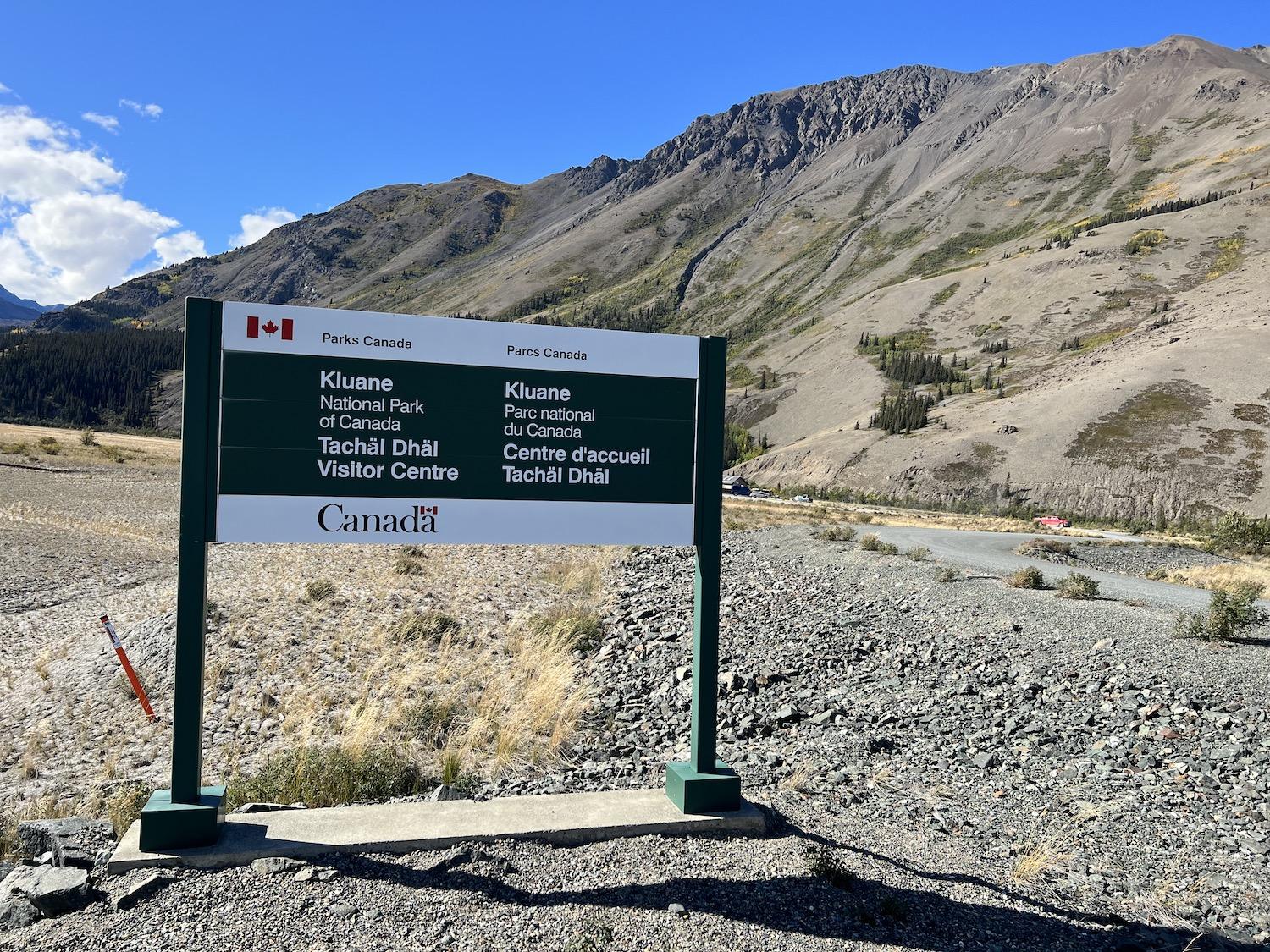
Kluane's Thechàl Dhâl' Visitor Centre (the spelling has changed since this sign was erected) is just off the Alaska Highway near a stretch of road where Dall's sheep come to lick road salt and can wind up becoming roadkill/Jennifer Bain
We can’t see a glacier from the Thechàl Dhâl' Visitor Centre, but the Kaskawulsh Glacier is nearby and I get to see it while on a flightseeing tour with Icefield Discovery.
Pilot Kensuke Miura takes me up in a Helio Courier H295, a short takeoff and landing (STOL) bush plane equipped with turbo chargers and wheel skis. Sometimes he lands on the glacier, but the conditions aren’t right for that so “today it’s only touch and go.”
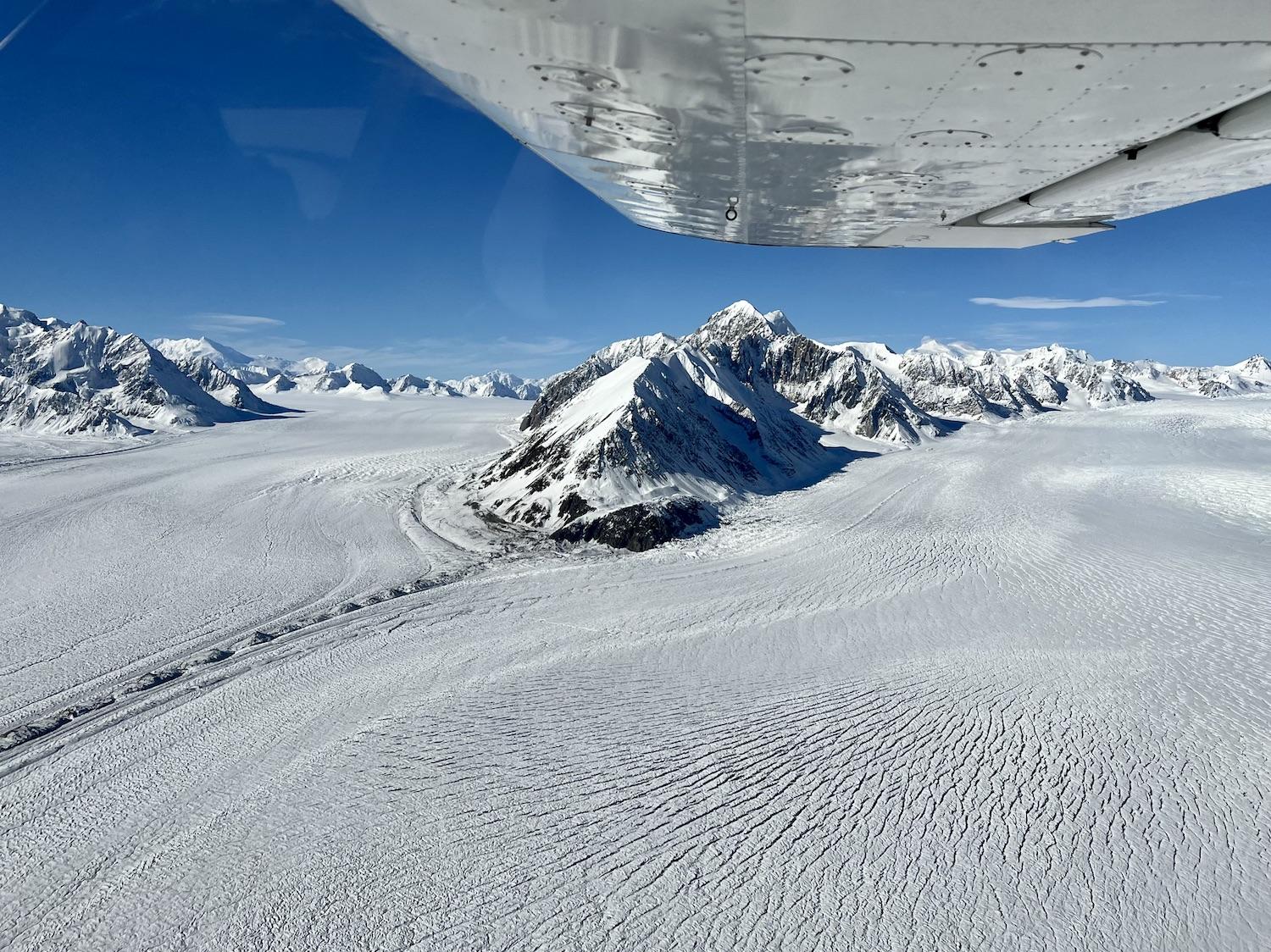
The view from a flightseeing tour with Icefield Discovery over Kluane National Park and Reserve/Jennifer Bain
We soar above the St. Elias Mountains, the largest non-polar icefield in the world, and over Kluane Lake — the biggest lake in the territory — before gawking at “giants” like Mount Logan. At 5,959 metres (19,550 feet), it’s the highest mountain in Canada and the second highest in North America after Alaska’s Denali/Mount McKinley (6,190 metres/20,310 feet).
“It looks like a highway, right?” says Miura of the landscape. “An ice highway.”
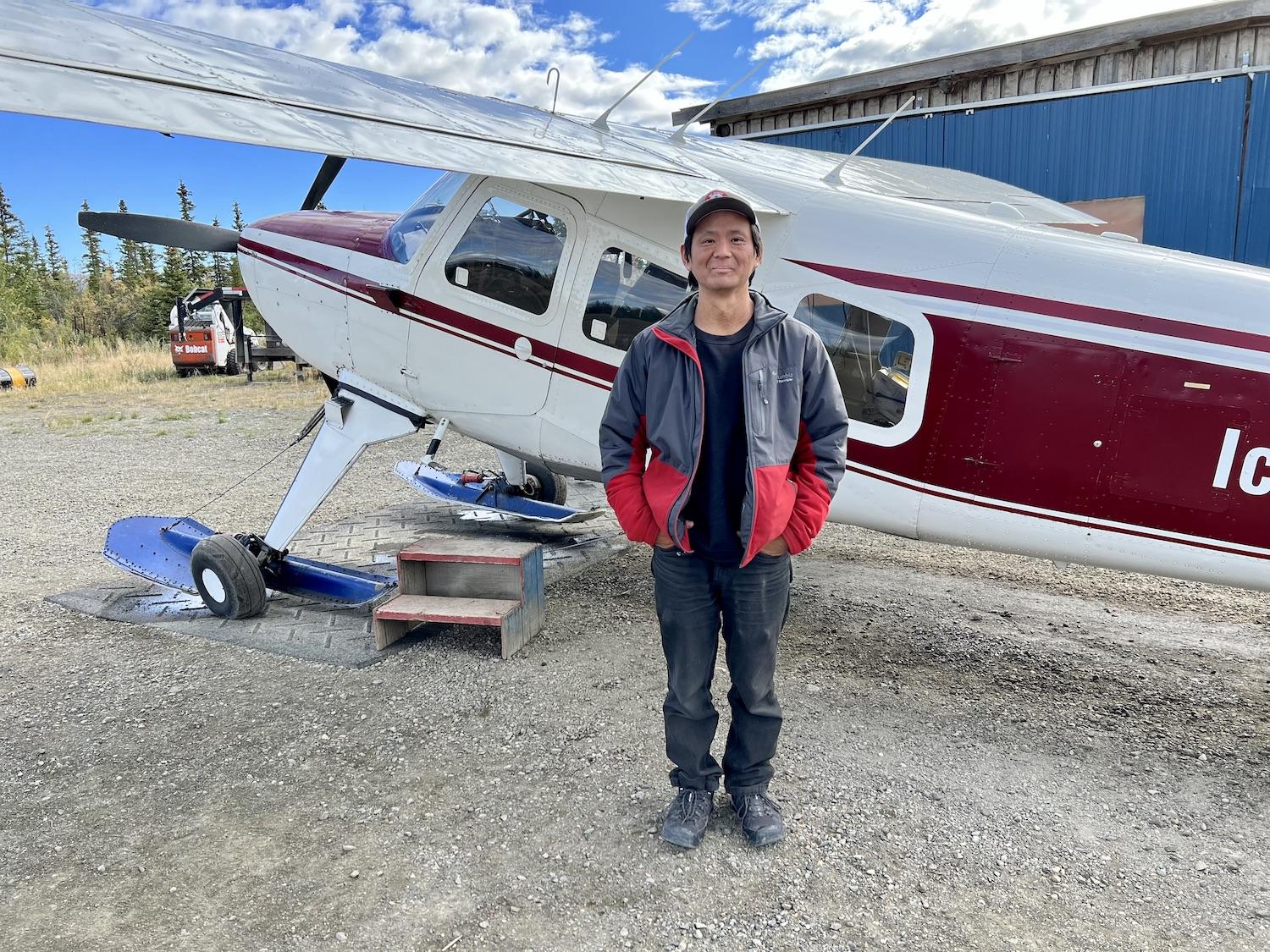
This is the plane that Icefield Discovery pilot Kensuke Miara flies in Kluane National Park and Reserve for glacier and mountain flightseeing tours/Jennifer Bain
The Vancouver-based pilot loves the way these mountains show a different face every day. In July and August, he can spot Dall’s sheep from the air, which look like those “white dots” I'm already famliar with. But it’s September and we don’t fly over any sheep today.
We approach the spot on the glacier where Miura likes to land and give people the thrill of walking around for a few precious minutes, but as warned it’s only “touch and go” today.
Miura smoothly lowers the plane as if we’re going to land, but just as the skis make the slightest contact with the sticky snow on the ground, he yanks the plane up and returns us to the sky for the trip back.


Add comment